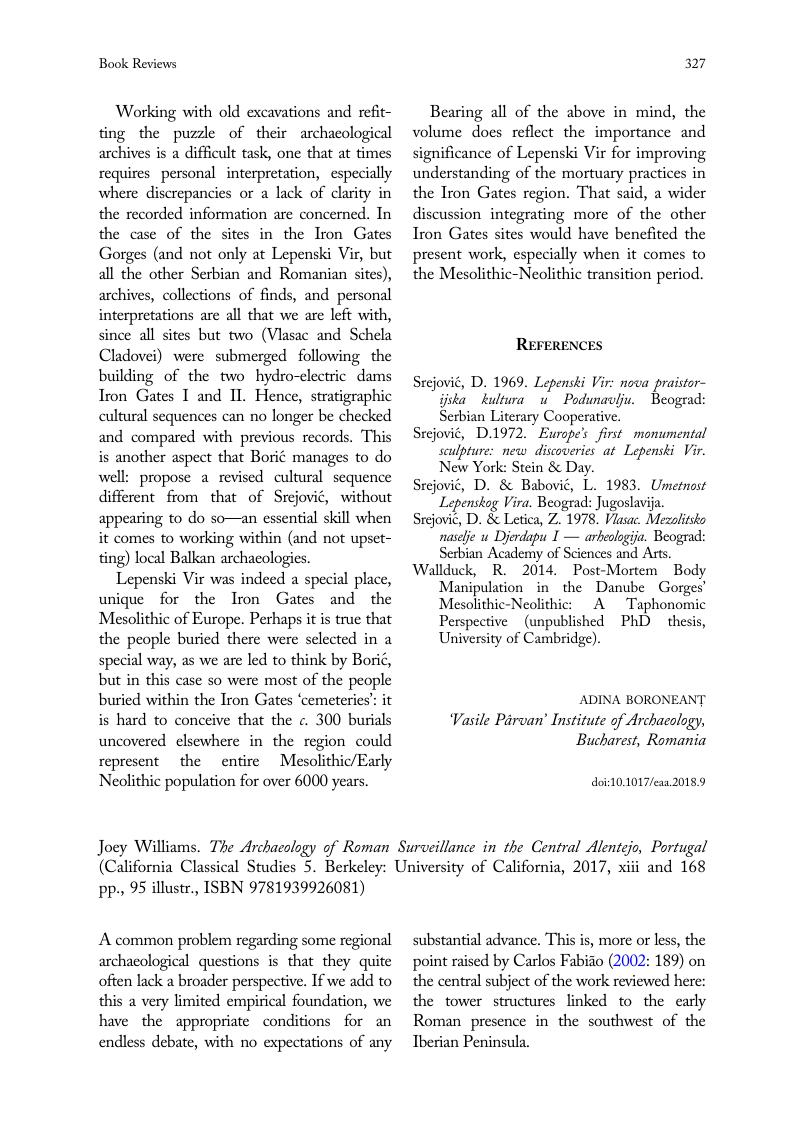No CrossRef data available.
Article contents
Joey Williams. The Archaeology of Roman Surveillance in the Central Alentejo, Portugal (California Classical Studies 5. Berkeley: University of California, 2017, xiii and 168 pp., 95 illustr., ISBN 9781939926081)
Review products
Published online by Cambridge University Press: 23 April 2018
Abstract

- Type
- Book Review
- Information
- Copyright
- Copyright © European Association of Archaeologists 2018


